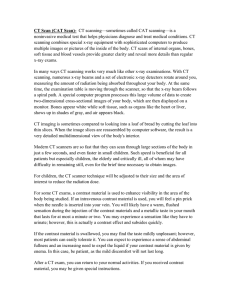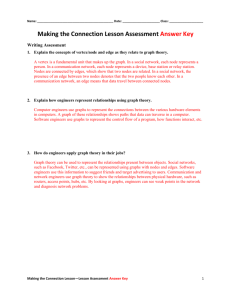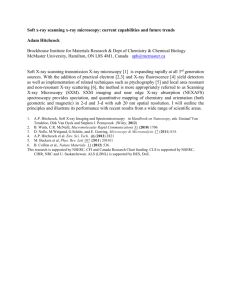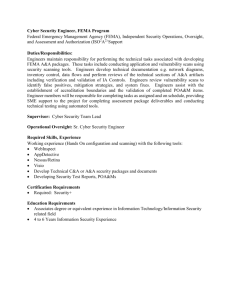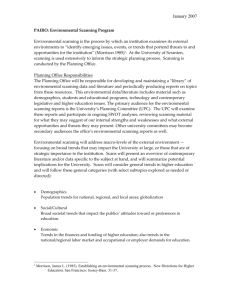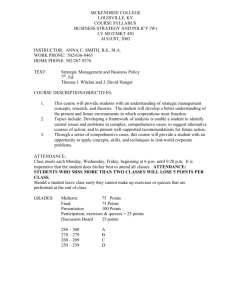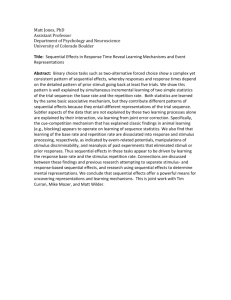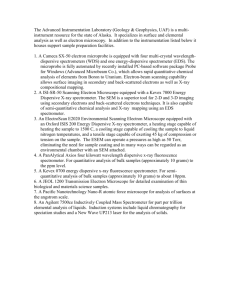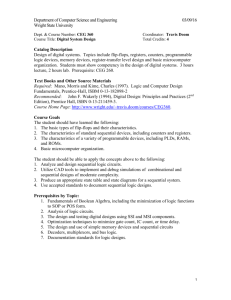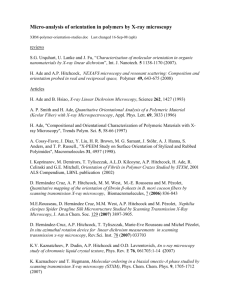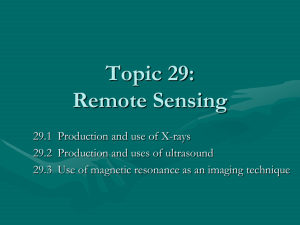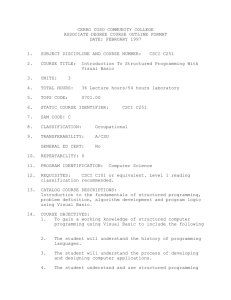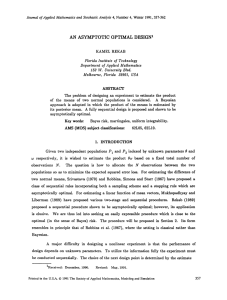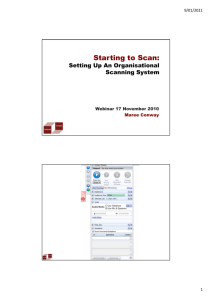Laboratory Reports for Materials Science and Engineering 405
advertisement
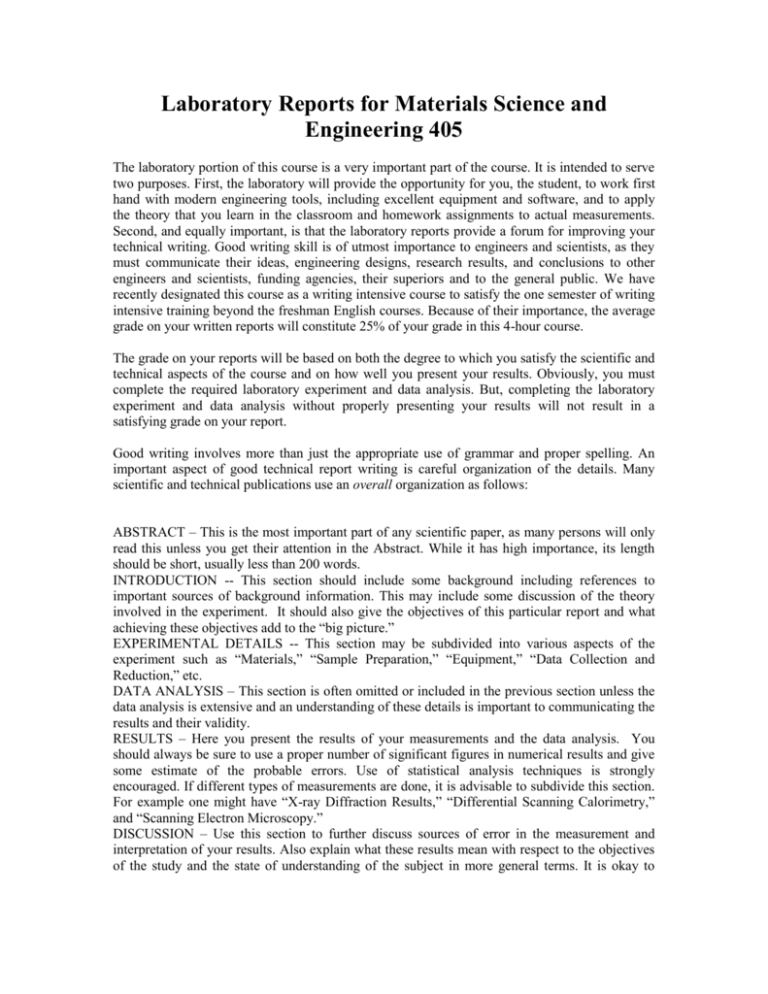
Laboratory Reports for Materials Science and Engineering 405 The laboratory portion of this course is a very important part of the course. It is intended to serve two purposes. First, the laboratory will provide the opportunity for you, the student, to work first hand with modern engineering tools, including excellent equipment and software, and to apply the theory that you learn in the classroom and homework assignments to actual measurements. Second, and equally important, is that the laboratory reports provide a forum for improving your technical writing. Good writing skill is of utmost importance to engineers and scientists, as they must communicate their ideas, engineering designs, research results, and conclusions to other engineers and scientists, funding agencies, their superiors and to the general public. We have recently designated this course as a writing intensive course to satisfy the one semester of writing intensive training beyond the freshman English courses. Because of their importance, the average grade on your written reports will constitute 25% of your grade in this 4-hour course. The grade on your reports will be based on both the degree to which you satisfy the scientific and technical aspects of the course and on how well you present your results. Obviously, you must complete the required laboratory experiment and data analysis. But, completing the laboratory experiment and data analysis without properly presenting your results will not result in a satisfying grade on your report. Good writing involves more than just the appropriate use of grammar and proper spelling. An important aspect of good technical report writing is careful organization of the details. Many scientific and technical publications use an overall organization as follows: ABSTRACT – This is the most important part of any scientific paper, as many persons will only read this unless you get their attention in the Abstract. While it has high importance, its length should be short, usually less than 200 words. INTRODUCTION -- This section should include some background including references to important sources of background information. This may include some discussion of the theory involved in the experiment. It should also give the objectives of this particular report and what achieving these objectives add to the “big picture.” EXPERIMENTAL DETAILS -- This section may be subdivided into various aspects of the experiment such as “Materials,” “Sample Preparation,” “Equipment,” “Data Collection and Reduction,” etc. DATA ANALYSIS – This section is often omitted or included in the previous section unless the data analysis is extensive and an understanding of these details is important to communicating the results and their validity. RESULTS – Here you present the results of your measurements and the data analysis. You should always be sure to use a proper number of significant figures in numerical results and give some estimate of the probable errors. Use of statistical analysis techniques is strongly encouraged. If different types of measurements are done, it is advisable to subdivide this section. For example one might have “X-ray Diffraction Results,” “Differential Scanning Calorimetry,” and “Scanning Electron Microscopy.” DISCUSSION – Use this section to further discuss sources of error in the measurement and interpretation of your results. Also explain what these results mean with respect to the objectives of the study and the state of understanding of the subject in more general terms. It is okay to speculate somewhat in this section, but the speculations should be reasonable possibilities and should be presented as possibilities rather than as fact. CONCLUSIONS – Describe here the things that you believe that you have established beyond reasonable doubt. A good report will always have this section. Sometimes in may be necessary to give negative conclusions. RECOMMENDATIONS FOR FUTURE WORK – This section is needed in progress reports, theses, and dissertations, but is usually not included in a scientific paper. In order to ensure good organization of your report, it is a good idea to start with an outline. The organization above should not be considered to be a rigid requirement, but a useful guideline to help you organize your report. For example, you may find that a section entitled “RESULTS AND DISCUSSION” works better than separate sections. Other aspects of good technical writing include (1) readable graphs, (2) tables that are easily read and have a clear purpose, and (3) references for all concepts and information obtained from other sources. With respect to the latter, you should use a proper reference style for each type of reference. There are many reference styles and you may use any of the established forms. The following are examples of one style that is used in several journals in the field of materials science: Journal Article Desio, G. P.; Rebenfeld, L. Journal of Applied Polymer Science 1992, 45, 2005-2020. Conference Proceedings Spamer, G. T.; Brink, N. O. 33rd International SAMPE Symposium, 1988; pp 284-295. Book Chapter Perez, G., in High Speed Fiber Spinning—Science and Engineering Aspects, Ziabicki, A. and Kawai, H., eds., Wiley: New York, 1985, p. 333. Note that it is now common practice to omit the article or book chapter title in order to conserve space. But, it is still good practice to include the article title. In the body of your report, all graphs, plots, photographs, micrographs, etc. should be referred to as figures and given sequential figure numbers and a captions describing what is presented in the figure. For example: Figure 2. X-ray patterns of melt spun PET as a function of take-up velocity. Tabulated information should be referred to as tables and given sequential table numbers and table titles. For example: Table 1. Measured Lattice Constants and Comparison to Literature Values Because we are interested in developing your writing communication skills in this course as well as your understanding of the structure of materials, we expect you to develop your laboratory reports in a format that would be acceptable for submission for publication to a journal.
